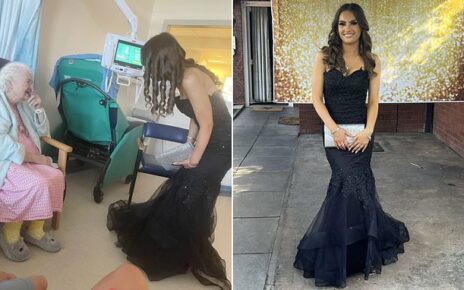Multiple states have reported new cases of parechoviruses, a group of viruses that commonly infect children, over the last two months, the Centers for Disease Control and Prevention said in a health alert to physicians and public health departments this week.
The recent cases belong to a subtype called A3, which is associated with more severe disease in newborns and infants, including neurological issues such as seizures or meningitis.
The alert doesn’t say which states have seen infections in young children or how many cases have been reported. The CDC did not immediately respond to an NBC News request for more details on the infections.
Increased testing in recent years could give the appearance of an uptick in cases, according to the CDC. But the Covid pandemic may also have temporarily halted exposure to parechoviruses, which likely started circulating again once restrictions peeled back, disease experts said.
“We noticed a few months ago reports starting to pop up throughout the country and now it appears that there’s widespread circulation of parechoviruses throughout the country,” said Dr. Kevin Messacar, a pediatric infectious disease physician and researcher at Children’s Hospital Colorado and University of Colorado.
“It’s not only that we are seeing the rare, severe cases that we have seen in the past," he added. "We’re also seeing more parechovirus activity in general and earlier in the season than we typically would see.”
It's hard to determine how many people get infected with parechoviruses, since the CDC doesn't consistently track cases and symptoms are typically mild or nonexistent, meaning parents usually don't bring their children in for testing. However, antibody studies suggest that most people are infected with some type of parechovirus during early childhood.
Most of the recent U.S. cases have been among infants, which is common, Messacar said.
Parechovirus symptoms include a rash on the hands and feet
Children with parechoviruses tend to develop a fever, rash and upper respiratory infection. Some patients may also experience gastrointestinal symptoms like nausea and vomiting. And some may have no symptoms at all.
"When you first get a clue that it might be parechovirus is if you see the rash,” said Dr. Dean Blumberg, chief of pediatric infectious diseases at UC Davis Children’s Hospital.
Clinicians often call it a "mittens and booties rash," since it's located on the hands and feet. But the rash itself can look different depending on the patient, Blumberg said, with some children experiencing generalized redness and others developing small bumps alongside flat, red areas.
Most children with mild infections recover after a few days.
“The vast majority of patients are going to get better on their own,” Blumberg said. “It’s just going to run its course. They’ll be sick for a few days, the rash will gradually fade, the fever will get better."
But in severe cases, infants younger than than three months may show signs of neurological issues like lethargy, seizures, an inability to eat or persistent fussiness that cannot be consoled.
“Those are all signs of a child that should be evaluated right away,” Messacar said.
Parents should generally bring infants to the hospital if they develop a fever, he added, even if it's not a parechovirus.
What are the risk factors for severe disease?
Healthy newborns and infants are still vulnerable to severe forms of parechovirus, disease experts said.
"The main risk factor for severe disease is the age of the infant," Messacar said. "The younger the infants are, the more likely they would be to present with that very rare complication of more severe neurologic disease."
In rare cases, some newborns and young infants will develop inflammation that depletes white blood cells in the brain and spinal cord. These babies may need to receive seizure medication or be put on ventilators in the immediate term, and in the long term may be at risk for neurodevelopmental issues.
“Unfortunately, there aren’t any antiviral medications available for parechoviruses and we currently don’t have any vaccines against the virus,” Messacar said.
Researchers suspect that babies with severe outcomes may not have received antibodies to the A3 subtype in the womb, making them more vulnerable to infection once they're born. A3 is generally less prevalent than other types of parechoviruses that infect humans, Messacar said, though it's still fairly common.
How to prevent getting sick
Children with parechoviruses can shed virus for long periods of time — around one to three weeks if they have a respiratory infection and up six months if they have a gastrointestinal infection, according to the CDC. However, researchers aren’t sure how long children may be contagious during that time.
"They may be contagious for that long, but there may be patients in the community who are contagious too and you just don't know about it because they're not tested and they may be asymptomatic," Blumberg said. "Asymptomatic shedding occurs also."
Parechoviruses can spread through feces, saliva and respiratory droplets from sneezing or coughing. Blumberg said it’s important for parents to enforce proper hygiene, including washing their hands after diaper changes.
But adults and older children shouldn't be too concerned about getting sick themselves, Messacar added.
"If you had twin infants at home, I would take a lot of precautions to try to prevent spread between them," he said. But "we usually don't see symptomatic disease and almost never see severe disease in older children."
Source: Read Full Article
